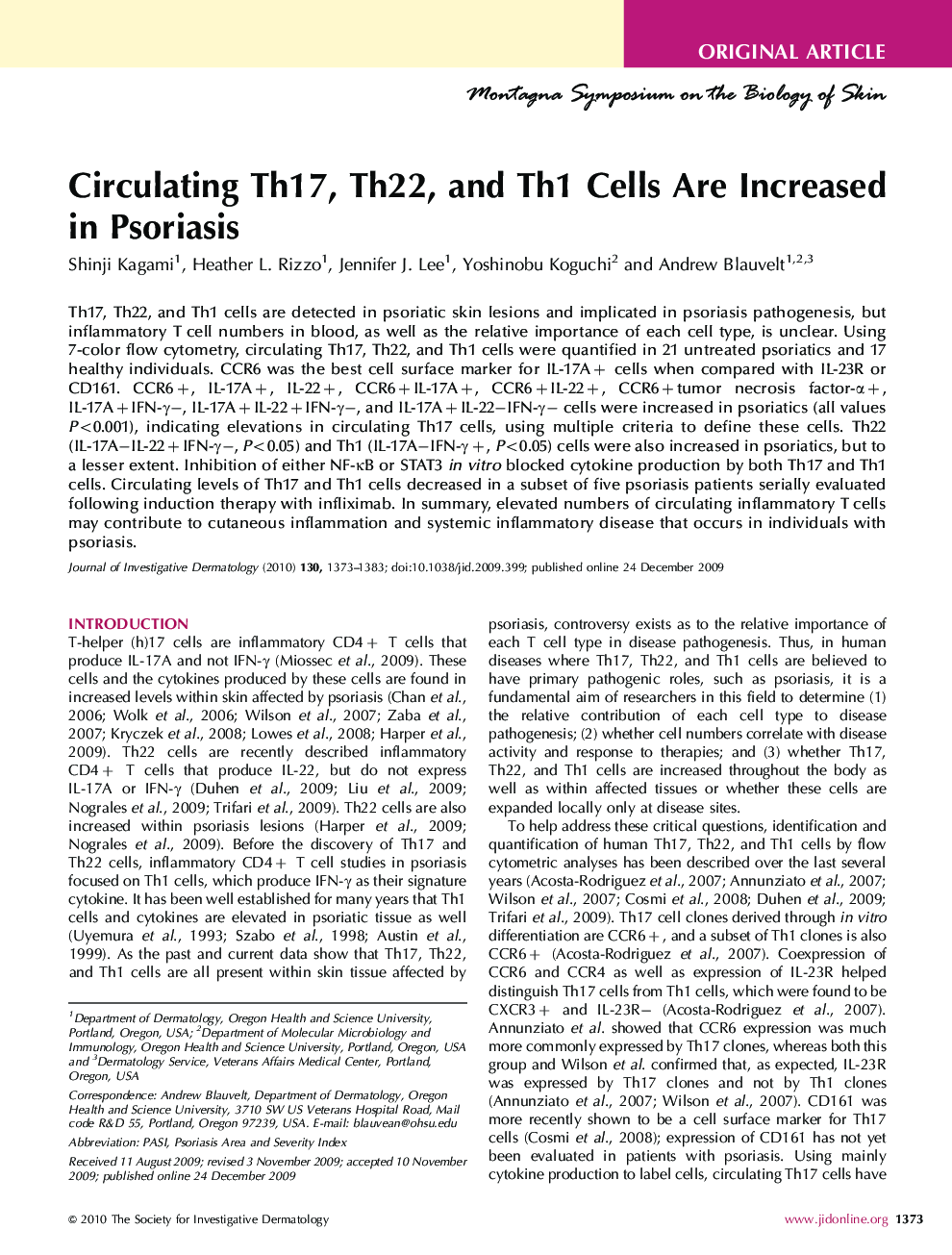| Article ID | Journal | Published Year | Pages | File Type |
|---|---|---|---|---|
| 3217102 | Journal of Investigative Dermatology | 2010 | 11 Pages |
Th17, Th22, and Th1 cells are detected in psoriatic skin lesions and implicated in psoriasis pathogenesis, but inflammatory T cell numbers in blood, as well as the relative importance of each cell type, is unclear. Using 7-color flow cytometry, circulating Th17, Th22, and Th1 cells were quantified in 21 untreated psoriatics and 17 healthy individuals. CCR6 was the best cell surface marker for IL-17A+ cells when compared with IL-23R or CD161. CCR6+, IL-17A+, IL-22+, CCR6+IL-17A+, CCR6+IL-22+, CCR6+tumor necrosis factor-α+, IL-17A+IFN-γ-, IL-17A+IL-22+IFN-γ-, and IL-17A+IL-22-IFN-γ- cells were increased in psoriatics (all values P<0.001), indicating elevations in circulating Th17 cells, using multiple criteria to define these cells. Th22 (IL-17A-IL-22+IFN-γ-, P<0.05) and Th1 (IL-17A-IFN-γ+, P<0.05) cells were also increased in psoriatics, but to a lesser extent. Inhibition of either NF-κB or STAT3 in vitro blocked cytokine production by both Th17 and Th1 cells. Circulating levels of Th17 and Th1 cells decreased in a subset of five psoriasis patients serially evaluated following induction therapy with infliximab. In summary, elevated numbers of circulating inflammatory T cells may contribute to cutaneous inflammation and systemic inflammatory disease that occurs in individuals with psoriasis.
